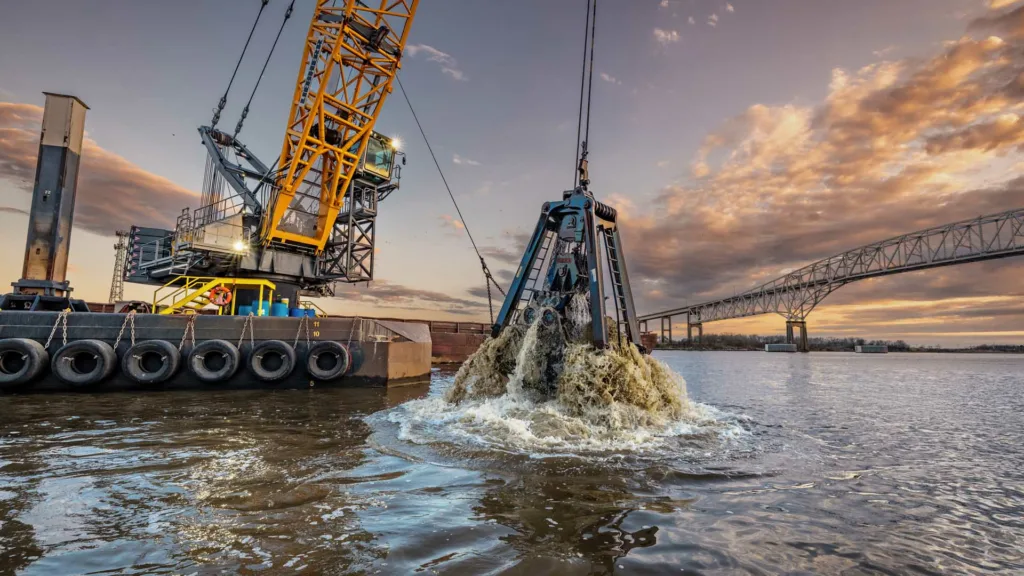Understanding Lake Dredging
Lakes serve as crucial resources for transportation, recreation, and economic development. However, maintaining their accessibility and functionality requires meticulous planning and management. This article delves into how navigation and infrastructure in lakes can be enhanced through dredging, environmental coordination, and the development of comprehensive dredged material management plans. By examining these elements in detail, we can better understand their interconnections and importance in sustaining lake ecosystems and their surrounding communities.
Definition and Purpose
Dredging refers to the process of removing sediments and debris from the bottom of lakes, rivers, and other water bodies. This activity is primarily conducted to maintain or increase the depth of waterways, thus enhancing navigation for boats and ships. Dredging is also essential for flood management, water quality improvement, and habitat restoration.
Types of Dredging
- Mechanical Dredging: Involves using a bucket, clamshell, or other devices to physically remove material from the waterbed.
- Hydraulic Dredging: Sediments are suctioned up along with water and transported as slurry to designated disposal or treatment areas.
- Environmental Dredging: Specifically aimed at removing contaminated sediments to reduce environmental and health risks.
Infrastructure Enhancement in Lakes
Navigation Aids
To enhance lake navigation, various aids like buoys, markers, and lights are installed to guide watercraft safely. These aids are crucial for preventing accidents, especially in areas with complex navigational routes or hidden underwater hazards.
Shoreline Protection
Shoreline stabilization techniques such as the construction of seawalls, riprap, and natural bioengineering solutions like planting vegetation can prevent erosion and protect infrastructural assets on the lake shores.
Port and Harbor Development
Modernizing ports and harbors by deepening channels and improving docking facilities can significantly boost local economies by facilitating larger vessels and increasing the efficiency of cargo handling.
Environmental Coordination in Dredging
Impact Assessments
Environmental impact assessments (EIAs) are critical before undertaking dredging projects. These studies help predict the potential environmental effects and guide the development of mitigation strategies to protect the ecosystem.
Monitoring and Management
Continuous monitoring of water quality, sediment composition, and aquatic life forms part of the environmental coordination efforts. Effective management practices ensure that dredging activities cause minimal disruption to the natural habitat.
Stakeholder Engagement
Engaging local communities, environmental groups, and government entities is vital. Their input can help shape project outcomes that are environmentally sustainable and socially acceptable.
Dredged Material Management Plans
Development of Management Plans
A dredged material management plan (DMMP) outlines how dredged materials should be handled, treated, and disposed of or reused. These plans are essential for ensuring that dredging projects are environmentally compliant and economically viable.
Options for Dredged Material
- Disposal at Sea: Suitable for non-contaminated materials, considering specific regulatory criteria are met.
- Land Reclamation: Dredged sediments can be used for creating new land or restoring eroded coastlines.
- Construction Materials: After proper treatment, dredged materials can be utilized in building and construction projects.
- Habitat Creation: Finely dredged materials can be used to create or restore wetlands, bird islands, or other wildlife habitats.
Future Prospects
Technological Advances
Emerging technologies such as robotic dredging and real-time monitoring systems promise to make dredging more efficient and less invasive to the aquatic environment.
Policy and Regulation
The evolving regulatory landscape can significantly impact dredging practices. Future policies may require more stringent environmental safeguards and community involvement in planning and execution phases.
Global Trends
With increasing global trade and climate change impacts, the role of dredging in maintaining navigable waterways and protecting coastal communities will only grow in importance.
Conclusion
Enhancing navigation and infrastructure in lakes through dredging, coupled with effective environmental coordination and well-planned dredged material management strategies, can lead to substantial benefits. Not only does this ensure the ecological health of the lakes, but it also supports economic growth and community well-being. By adopting integrated and sustainable approaches, the future of lake management looks promising, with significant opportunities for innovation and improvement.
